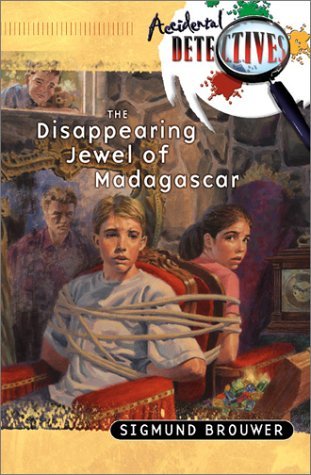 by Sigmund Brouwer
by Sigmund Brouwer140 pages / 2002
This is a great book.
It has a great beginning with the “star” of the book, 12-year-old Ricky Kidd, getting the sort of haircut you would expect from a barber that can’t stop sneezing. And it has a great ending when Ricky’s friends are involved in a memorable worm-eating escapade.
In between the reader is introduced to the cast of characters: Lisa, a girl who can play sports with the best of the boys, even if the boys don’t want to admit that; Mike, the impish rascal who pulls gentle pranks on everyone; Ralphy, the computer genius who owns his very own iMac; and Joel, Ricky’s six-year-old brother, who seems to be able to disappear and appear at will.
As the title suggests a jewel plays a central role in this book. The Jewel of Madagascar is an impressive rock with a very strange curse placed on it: whoever touches it will have his friends turn into strangers, and have strangers turn into friends. As a Christian kid Ricky doesn’t think much of curses…until all his friends start avoiding him. Could the curse be real?
Well, no. But I’m not going to ruin the story by telling you anything more.
I liked the story in this book, and also liked the underlying Christian flavor. The author communicates a Christian message without beating his readers over the head with it. In fact there is only one page of explicitly Christian content in this book. When Ricky’s friends start avoiding him he gets a little depressed and worried. His dad notices and spends a few paragraphs talking to Ricky about how we don’t need to worry because we can always trust in God.
The only objection I can raise has nothing to do with this particular book. In another book, The Volcano of Doom, which is a part of the same “Accidental Detectives” series, a few paragraphs are included on how the Bible is not a “science manual” and how the Genesis creation account tells us why the universe was created, not how it was done. It is a not-all-that-subtle shot at Six-Day Creationism, though kids will likely miss it. Still, parents may want to avoid that book.
I do, however, highly recommend The Disappearing Jewels of Madagascar for anyone who has kids in the Grade 3 to Grade 7 range.
You can pick it up at Amazon.com by clicking here and Amazon.ca here.



